Minimalist Home Decor: Create a Warm and Personalized Space
Key Takeaways
- Minimalist home decor is less about “less stuff” and more about intentional choices: calm palettes, clean lines, texture, light, and positive space.
- Start with edits, declutter, store, simplify, then layer in materials and a restrained color story to create warmth, not sterility.
- Walls are essential in minimalist spaces, a few large, cohesive pieces or a simple grid of photos with Mixtiles keeps things calm, balanced, and personal.
- Maintain your minimalist home with light routines, a one-in-one-out mindset, and periodic refreshes, no overhaul required.
Minimalist home decor calms a space by prioritizing clarity, comfort, and intention. It is not about bare rooms, it is about meaningful edits, warm materials, and a few well-chosen accents. This guide shows you how to design a minimalist home you will actually live in comfortably, from color, light, and layout to shelves, surfaces, and especially your walls. You will find room-by-room ideas, quick wins, and smart wall-art strategies, plus how Mixtiles can create a minimalist picture wall in minutes, with no nails or damage.
Ready to create a minimalist look? Turn your photos into stylish photo tiles in minutes. Upload your favorites, choose a clean frame, and build a calm, cohesive grid. No nails, no damage, and easily repositionable.
What is minimalist home decor (really), and why is “warm minimalism” winning?
Minimalist home decor is the practice of editing a space to the essentials, then adding comfort through texture, light, and scale. Warm minimalism wins today because it reduces visual noise without feeling cold. The result is a livable calm, not an empty room.
The philosophy: intentionality, clarity, calm

Minimalism is an intention filter. You keep what you use and love, you remove what distracts, and you design with breathing room so your eyes and mind can rest. That clarity makes small homes feel bigger and busy homes feel easier.
Warm vs. stark minimalism: texture, wood, earth tones, and softness

Stark minimalism relies on pure white and hard edges. Warm minimalism softens the look with natural wood, woven textures, matte finishes, and tonal color. Think ivory linen, clay, oak, plaster, and soft black instead of glossy metal and high contrast.
Benefits you will feel daily: lower visual stress, easier cleaning, more appeal
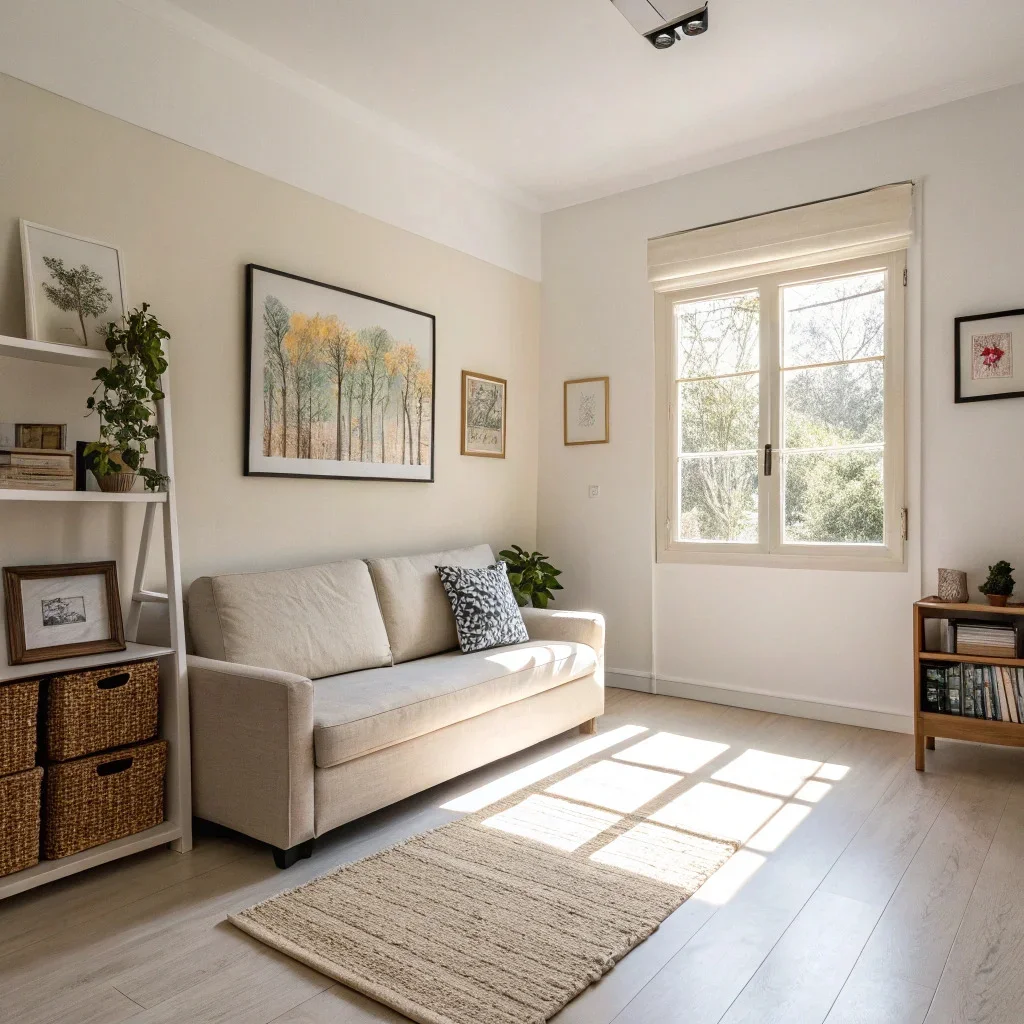
Fewer objects means less dusting and faster floors. Clear surfaces reduce decision fatigue. A restrained palette ties rooms together so your home looks styled even on busy days.
How do you choose a minimalist color palette without going bland?
Start with a neutral base, then create depth with texture and a single accent color. The goal is cohesion with personality, not monotony.
Start neutral, white, cream, beige, greige, black, and add tonal depth
Pick one light neutral and one dark grounding tone to repeat across rooms. For example, warm white walls with black accents, then layer taupe, sand, or mushroom for depth. Your rooms will read calm from afar and interesting up close.
Use texture, linen, boucle, jute, wood, plaster, to add interest
When color is quiet, texture does the talking. A jute rug, linen curtains, a ribbed ceramic vase, and a plaster lamp shade add touchable variation that feels rich, not busy.
Add a single accent hue, olive, rust, clay, inky blue, for personality
Choose one accent that repeats sparingly. Olive or inky blue pillows, a clay-toned throw, or a single colored artwork can animate a space without breaking the minimalist mood.
Which furniture and layouts support minimalist home decor?
Edit before you add. Choose fewer, better pieces with simple silhouettes and give them space to breathe.
Edit first: remove extras, then right-size what remains
Pull out side tables you do not use, extra chairs, and duplicate storage. Measure what remains and confirm every item earns its footprint. Right-sizing instantly reduces clutter.
Favor clean lines, low profiles, and quality over quantity
Look for straight or gently curved lines, open bases, and solid materials. A single well-made sofa beats multiple small seating pieces that chop up the room.
Keep floors and pathways clear for instant calm
Nothing on the floor except furniture. Use closed storage to hide baskets and bins. Clear pathways make rooms feel bigger and more intentional.
How should your walls work in a minimalist home?
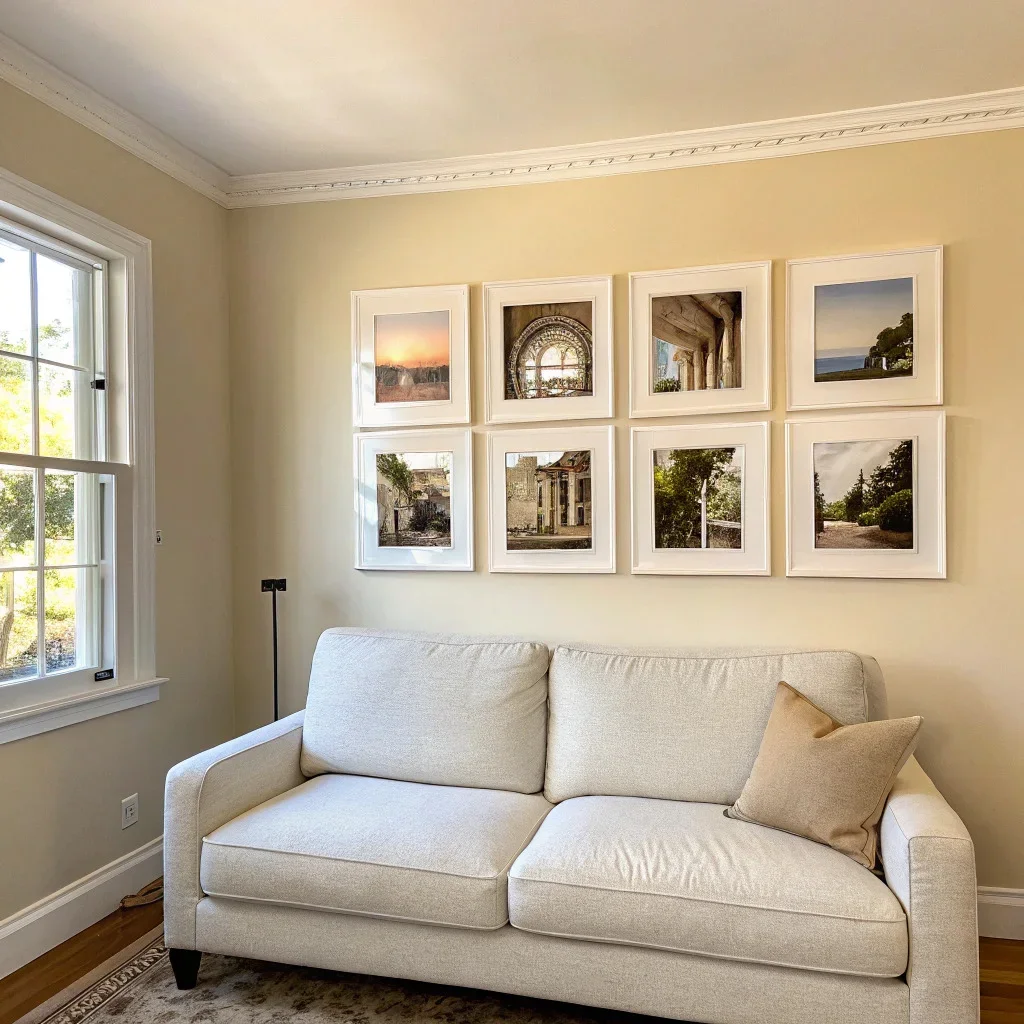
Walls anchor a minimalist room. Use fewer artworks, scale them up, and keep frames cohesive so the wall reads as one calm composition.
Do minimalist homes use wall art?
Yes, just less of it, scaled up, and cohesive. Choose one large piece or a tight grid rather than many small frames. The eye reads a single composition more calmly than a scattered mix.
One statement piece vs. a simple grid: when to choose each approach
Pick a single large artwork for rooms with strong architectural features, like a fireplace or large window. Choose a grid when you want balance over a sofa, bed, or console, especially in symmetrical layouts.
Materials and finishes that read minimal, matte frames, neutral borders, white space
Matte black, white, or natural wood frames feel quiet. Generous white borders give photos room to breathe. Consistent sizing keeps visual rhythm steady.
Why Mixtiles fit minimalism: slim profiles, consistent sizing, peel-and-stick simplicity
Mixtiles wall photo tiles are lightweight and repositionable, so you can build a clean grid without tools or damage. Most customers choose our popular 8 by 8 inch tiles, about 20 by 20 centimeters, with slim, matte frames. If you prefer canvas photo prints, our peel-and-stick or magnetic mounting options keep installation clean and minimal.
Three effortless minimalist layouts with Mixtiles
These layouts deliver calm composition with minimal effort.
- 3×3 grid, nine tiles: balanced photo gallery wall feel over a standard sofa or on a feature wall;
- 2×3 grid, six tiles: streamlined statement above a console or queen bed;
- Single linear row, three to five tiles: refined rhythm in a hallway, living room wall, or entry.
Minimalist spacing and alignment tips
Consistent spacing and alignment make your wall read as one serene piece.
- Keep spacing consistent, around 2 inches or 5 centimeters edge to edge;
- Align the outer edges with nearby furniture or architectural lines for cohesion;
- Hang at eye level, center of the composition at about 57 to 60 inches or 145 to 152 centimeters from the floor.
Quick size planning for common Mixtiles layouts
Use this table to estimate overall grid dimensions and pick the right layout for your wall or furniture width. Calculations assume 8 by 8 inch tiles, 20 by 20 centimeters, and 2 inches spacing, 5 centimeters, between tiles:
|
Layout |
Total Width, inches, cm |
Total Height, inches, cm |
Best Placement |
|---|---|---|---|
|
3×3 grid |
28 in, 71 cm |
28 in, 71 cm |
Above 72 to 84 in, 183 to 213 cm, sofas; feature walls |
|
2×3 grid, vertical |
18 in, 46 cm |
28 in, 71 cm |
Above consoles or nightstands; narrow walls |
|
Row of 3 tiles |
28 in, 71 cm |
8 in, 20 cm |
Over full beds, small dining walls, entries |
|
Row of 5 tiles |
48 in, 122 cm |
8 in, 20 cm |
Long hallways, above 60 to 72 in, 152 to 183 cm, media consoles |
For deeper sizing rules by room and furniture width, see our wall art size guide to choose the right proportions for sofas, beds, dining areas, and more.
Installation and care notes: Mixtiles adhere best to clean, dry, painted walls. Avoid brick and heavily textured surfaces. Wait at least two weeks after fresh paint. To clean frames and tiles, dust with a dry microfiber cloth.
How do you declutter decor without losing your personality?
Curate by meaning and longevity. Keep what you love and use often, then display fewer things, larger in scale.
The “keep it or let it go” test: love it, use it, display it year-round
Hold each item and ask if it earns everyday space. If not, store it for specific seasons or donate it. Your shelves will instantly feel more grown up.
Curate by meaning, not trend; store seasonals sparingly
Choose objects tied to memories, travel, or craft. A single handmade bowl reads more beautifully than a cluster of impulse buys.
Embrace negative space, blank areas are breathing room
Leave at least one shelf or section empty on purpose. That pause is what makes your favorite pieces stand out.
What lighting choices make minimalist home decor feel inviting?
Use natural light generously, then layer soft artificial lighting so rooms feel warm at any hour.
Maximize natural light: lighter drapery, fewer visual barriers

Choose sheer or light-filtering panels in the same tone as your walls. Keep window sills clear so daylight extends further into the room.
Layer ambient, task, and accent lights for softness
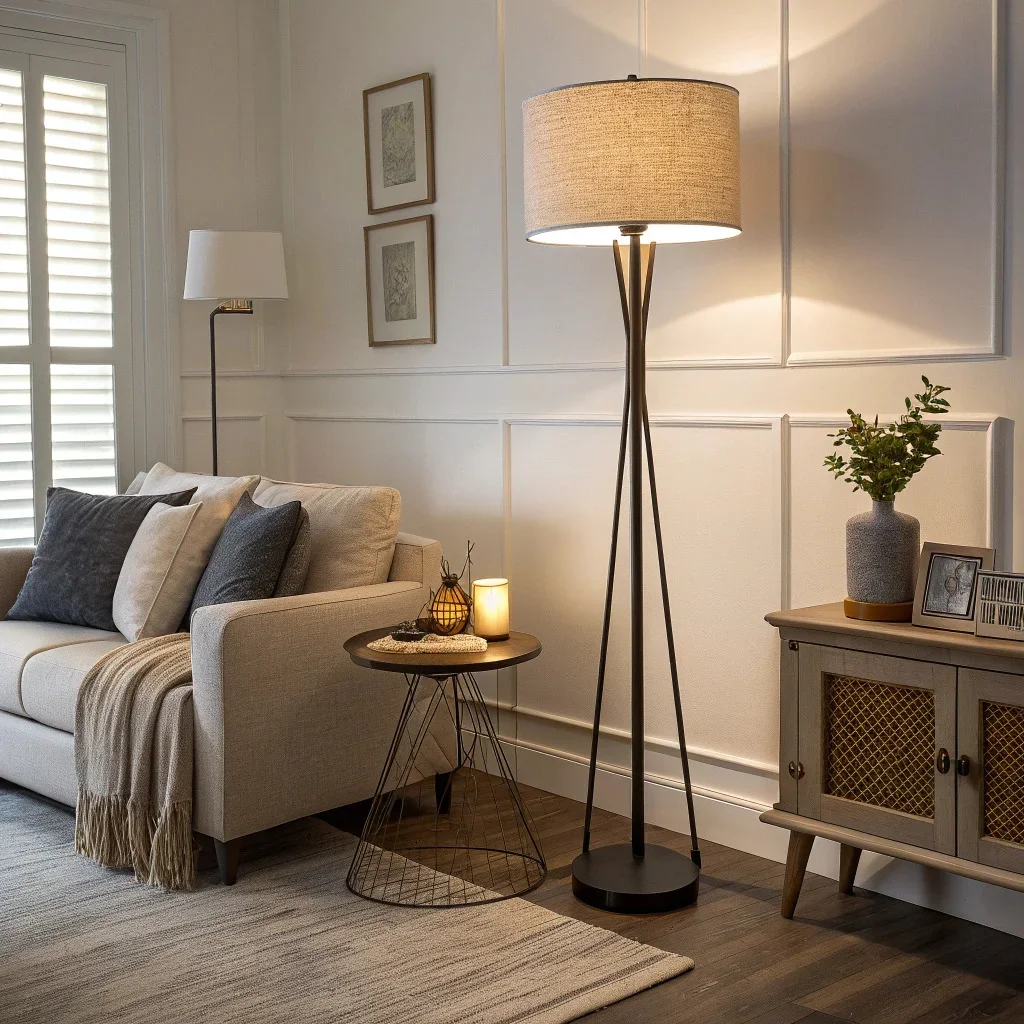
Pair a dimmable ceiling light with a fabric-shade floor lamp and a small table lamp. The layered glow makes minimal rooms feel cozy rather than stark.
Mirrors and reflective finishes to bounce light without visual clutter

A simple framed mirror added to a wall opposite a window doubles the daylight. Choose matte frames and subtle metal accents to avoid glare.
How do you style shelves, coffee tables, and countertops the minimalist way?
Style with intention, then stop. Aim for balance, texture, and plenty of empty space.
The rule-of-thirds with intention, books plus greenery plus sculptural object
On a coffee table, a low stack of books, a small plant, and a sculptural bowl create visual rhythm without clutter.
Stick to odd-number groupings and low contrast for rhythm
Groups of three or five feel natural to the eye. Keep tones close so objects blend into the palette instead of shouting.
Leave at least 30 to 50 percent of the surface empty
The empty space is not wasted space. It is the quiet that makes the composition feel intentional.
Design a minimalist wall you can refresh anytime. Transform your favorite photos into beautiful canvas prints. Choose 6 to 9 images, pick a clean style, and arrange a calm grid. Move each piece in seconds with our damage-free options.
Can minimalist home decor work in small apartments, rentals, and family homes?
Yes. Lean on damage-free wall art, scaled furniture, and durable textiles. Minimalism reduces chaos in busy homes and visually expands small ones.
Rentals: damage-free wall art, Mixtiles, and mobile furniture zones
Mixtiles peel on and off cleanly, so you can create a photo gallery wall without risking your deposit. Use lightweight stools and nesting tables you can move as needs change.
Families: closed storage, washable textiles, durable materials
Choose cabinets and ottomans with hidden storage. Slipcovered sofas and washable rugs keep the look minimal and maintenance low.
Small spaces: vertical lines, light palettes, and scaled-up art to “expand” rooms
Hang curtain rods high, keep walls light, and use one larger artwork or a tight grid rather than many small frames. Bigger reads calmer and makes rooms feel wider.
What are the fastest room-by-room minimalist updates?
Target the highest-impact surfaces, then add one calm wall statement. You can transform a space in under an hour per room.
Living room: 60 minutes

Clear the floor and surfaces, coil or conceal cables, and set a neutral throw on the sofa. Additional home interior for your living room to achieve a minimalist effect includes styling the coffee table with one low stack and a plant. Install a 2 by 3 Mixtiles grid centered above the sofa and aligned with its edges.
Bedroom: 45 minutes
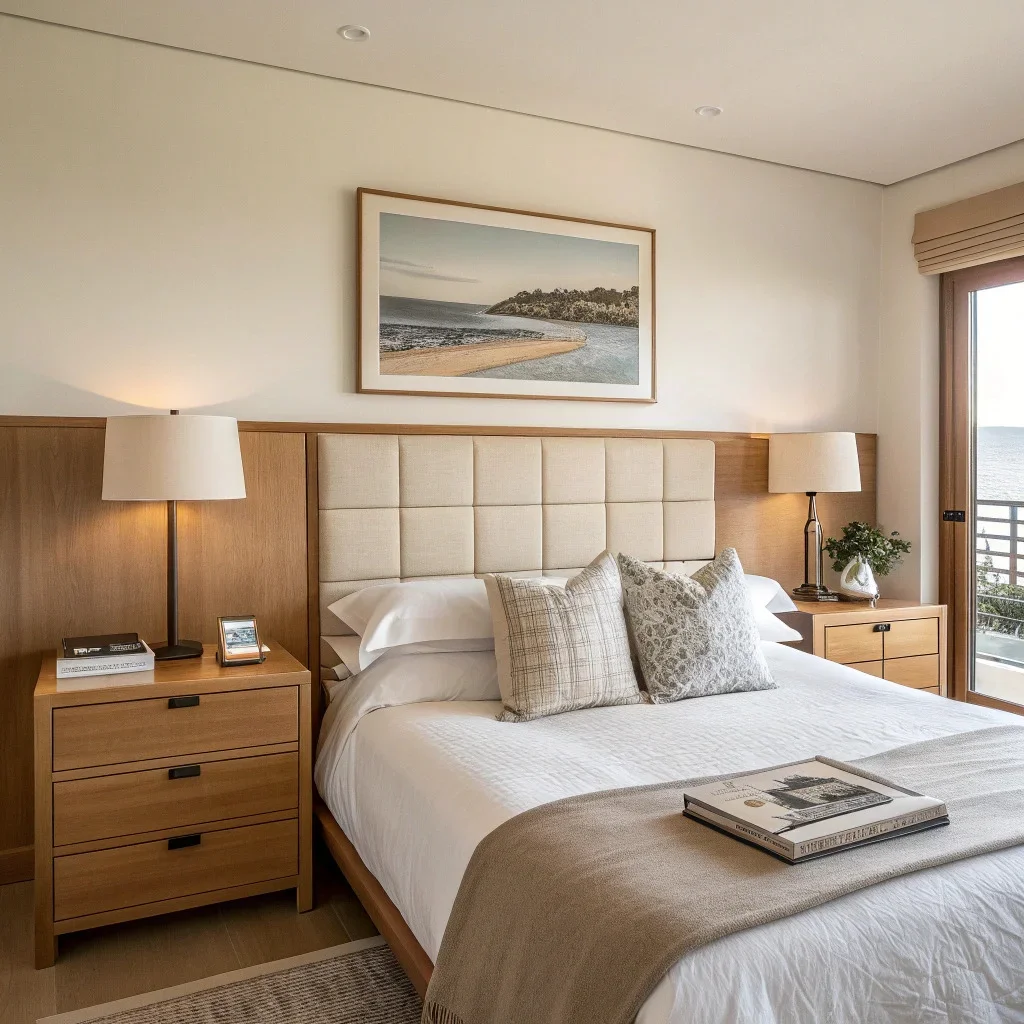
When it comes to bedroom wall decor and aesthetics, match table lamps, simplify nightstands to a book and a small dish, and dress the bed in a calm duvet. Above the headboard, hang one large piece or a tight row of three Mixtiles for balance.
Kitchen: 40 minutes
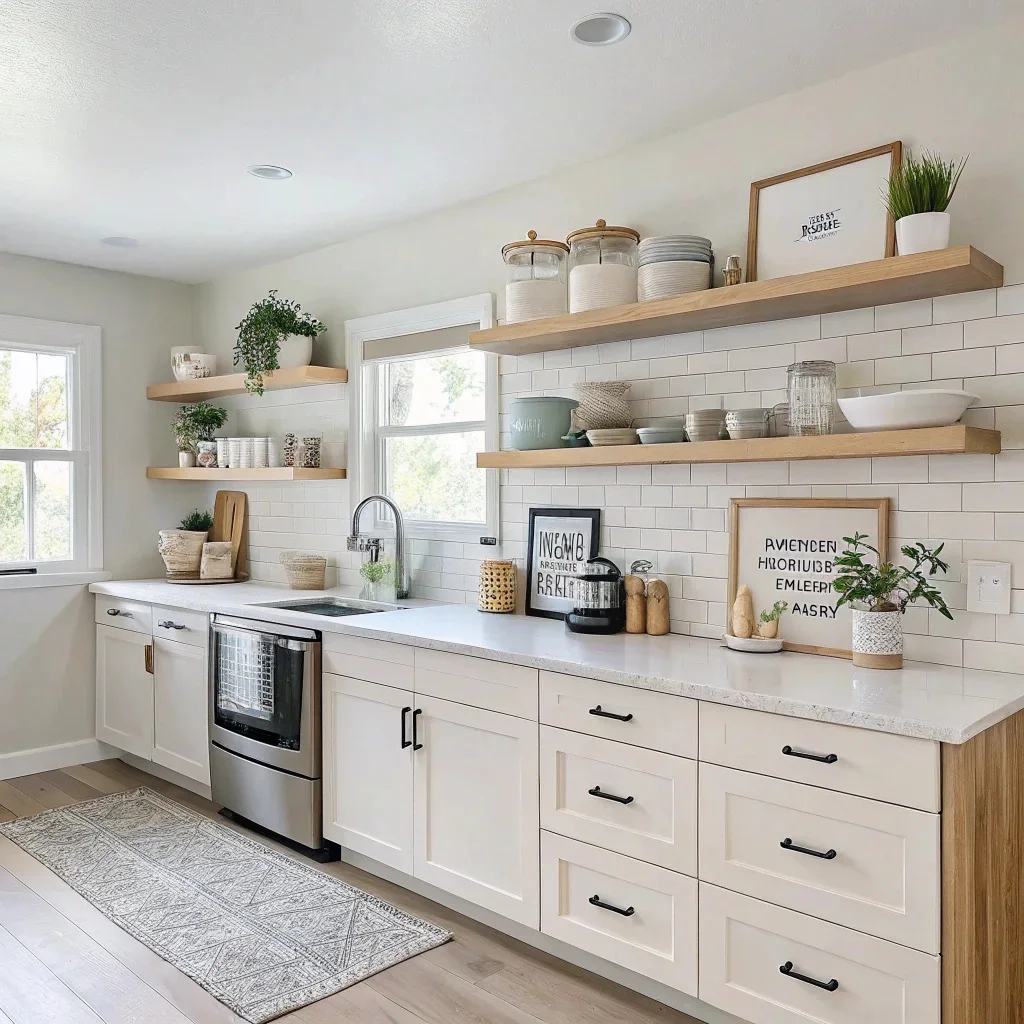
Clear counters except daily appliances, decant or conceal packaging, and keep open shelves at roughly seventy percent utility and thirty percent decor. A single framed print or two Mixtiles by the breakfast nook is enough.
Bathroom: 30 minutes
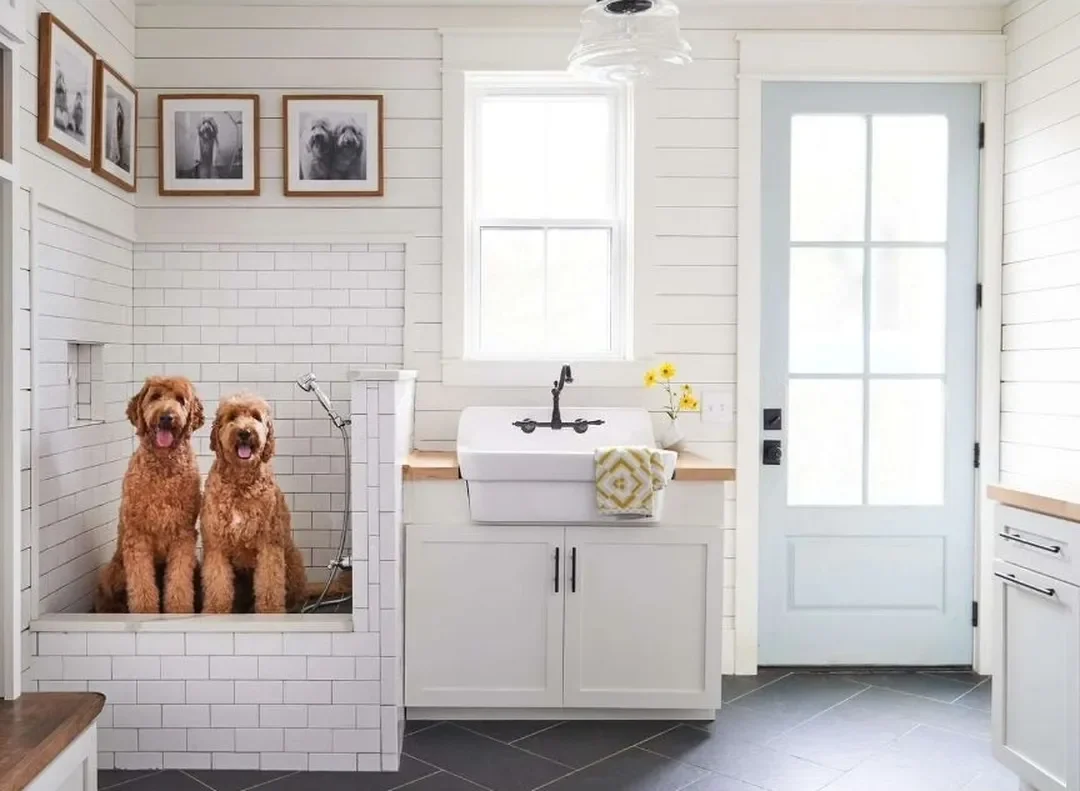
Unify towels, add one small plant, and choose one scent. When considering bathroom home decor, center a short row of Mixtiles above the towel bar or over the toilet for a polished finish.
Entryway: 30 minutes

Use a slim console, a catchall tray, and concealed shoe storage. A single Mixtiles strip above the console anchors the vignette without visual clutter.
Home office: 45 minutes

Manage cables, pick one focused task light, and create an inspiration grid of Mixtiles on the wall you face. This keeps motivation visible without messy pinboards.
How do you keep your minimalist home…minimal?
Build light, repeatable habits. Micro-resets keep order without marathon cleanups.
The following three habits make maintenance almost automatic.
- Weekly 10-minute reset per room, clear surfaces, return strays, and dust quickly with a microfiber cloth;
- One-in-one-out rule for decor and textiles, if a new pillow or vase comes in, one leaves;
- Quarterly edit, reassess shelves, surfaces, and walls, remove what you stopped noticing, and refresh layouts with repositionable Mixtiles.
What budget-friendly swaps deliver the biggest minimalist impact?
Think fewer, bigger, calmer. A larger neutral rug to unify seating, a single large plant for organic texture, and uniform frames for visual order will outshine small quick buys.
Replacing many small frames with one clean Mixtiles grid simplifies dusting, straightening, and visual noise at once. Upgrading lamp shades and drapery to plain, textural neutrals removes pattern clutter without renovating.
What common minimalist decor mistakes should you avoid?
Going cold is the most common mistake. Counter that with warm woods and touchable textures. Over-accessorizing shelves is another. Curate your favorites, then remove one more item so the shelf breathes.
Too many small artworks fracture a wall. Scale up with a single piece or unify sizing with a Mixtiles grid so the wall reads as one calm composition.
Minimalist home decor thrives on restraint, rhythm, and warmth. Edit first, then layer texture, light, and a restrained palette so your rooms feel quieter and more intentional. Treat walls as anchors, choose one large piece or a simple, cohesive photo grid for personality without visual noise.
With Mixtiles, you can install and refresh walls in minutes, so maintaining your minimal home becomes simple and satisfying.
Make minimalist wall art the easiest part of your home. Explore our picture tiles for inspiration and create your own clean, cohesive photo grid today. With peel-and-stick frames, it is effortless, nail-free, and completely repositionable.
Frequently Asked Questions
What does minimalist home decor really mean?
Minimalist home decor focuses on essentials, clarity, and comfort. It uses clean lines, restrained color, and generous negative space, then adds warmth through texture, natural materials, and soft lighting. The goal is calm, livable rooms that feel edited, not empty.
How do I decorate my home as a minimalist?
Start by decluttering and right-sizing furniture. Choose a neutral base with one accent hue, layer texture for depth, and keep surfaces clear. Scale up wall art, or use a cohesive photo grid with slim frames. Damage-free options like Mixtiles make layouts easy to install and refresh.
What is the 3-5-7 rule in decorating, and how do I use it minimally?
The 3-5-7 rule uses odd-number groupings to feel balanced and natural. In minimal spaces, style small sets of three or five items, vary height and texture, keep colors tonal, and leave breathing room. Edit once more so the arrangement reads calm, not cluttered.
What is the two-thirds rule in interior design?
The two-thirds rule guides pleasing proportions. Aim for art, mirrors, or photo grids to span about two-thirds the width of the furniture below, like a sofa or console. Rugs should cover roughly two-thirds of the room or seating zone. This ratio keeps compositions cohesive and calm.

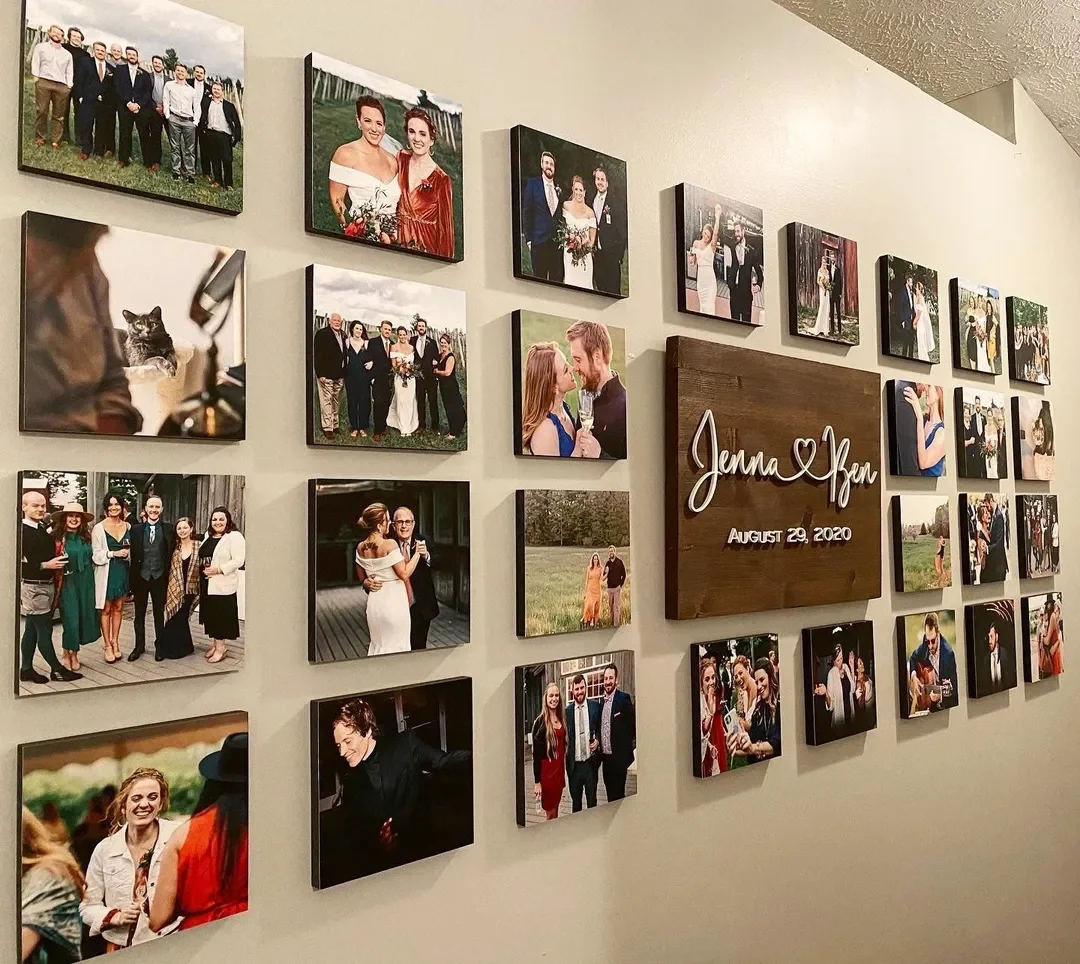
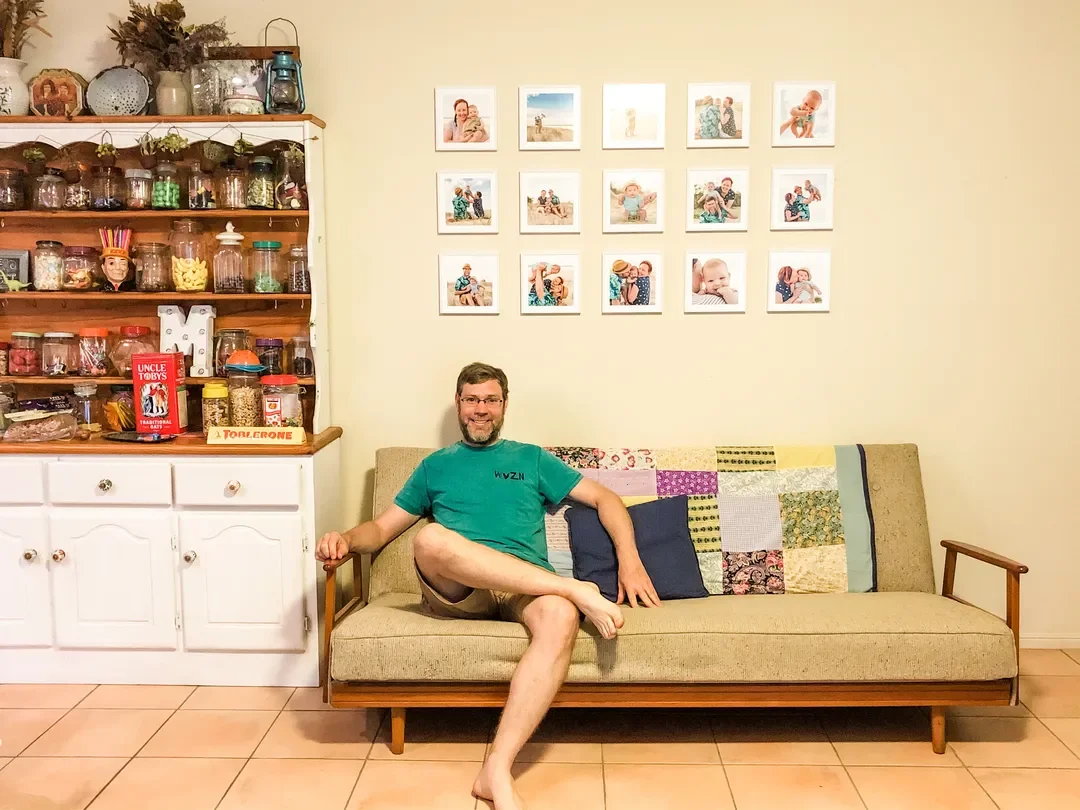
Be first to know — deals, news & decor ideas.
By clicking you agree to the Terms of Use & Privacy Policy
